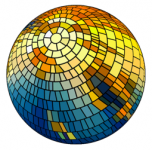There are a myriad of methodologies which facilitators, lecturers or teachers can use in their GCDE work to encourage participation and engagement with issues.
> > List of methodology examples
How we approach working with learners in GCDE work, is important. We want people to critically engage with the issues, actively participate in their own learning and co-create new knowledge. Active learning or participatory learning methodologies (PLM) can help us to achieve our GCDE goals. PLMs challenge what Freire refers to as the ‘banking system’ of education where knowledge is transferred directly from the ‘expert’ to the learner (Horgan and O’Rourke, n.d.: 2-3). Instead, participants are actively involved with the learning process and connecting with transformative pedagogies. Working in pairs, group work, role play, images, film, storytelling, walking debates, open space dialogue, community-linked learning, creation of resources, website, videos and so on, are regularly used as active learning tools. Part of the work of an educator is to understand which methodologies best suit the particular learning stage or issue under consideration. Some examples are provided in Appendix 2 but a myriad of such methodologies are available on websites such as developmenteducation.ie, WorldWise Schools or UNESCO. Horgan and O’Rourke’s study (ibid: 5) finds that third level educators identify the size and structure of the lecture theatre as the biggest deterrent to using PLMs. They provide advice on how to overcome the challenges and show the possibilities which do exist in large classrooms. In recent Covid-19 times practitioners have also had to adapt some of these tried and tested methodologies to online platforms. This has been helped by advancements in online technologies with a vast array of web-based collaboration, communication and creative tools now available.
However, no matter how new, engaging or technologically advanced our methodologies become the critical reflection, analysis and action dimensions of GCDE are at the centre. GCDE methodologies in themselves could become superficial if not ‘fun’ education experiences, as though completing the ‘activity’ was the end in itself. The approach we take and methodologies we use are central to breaking issues down and unpacking them with students. However, the learning methodologies are deeply linked to the cognitive, emotional and behavioural aspects of GCDE described above. The student is still at the centre. Critical analysis, understanding the nature of power, local-global connectivity and responsibility, are what really matter. While the educator will of course select suitable pedagogical approaches, the issue, as Bourn (2011b: 20, quoted in Dillon, 2017: 97) argues, “… is not about encouraging DE activities in the classroom, but rather […] the extent to which the practices are questioning and challenging dominant educational thinking”. It is important too to remember that active learning education is a process and not a ‘product’. As Fiedler (2008: 8, cited in Dillon: ibid) puts it, “knowledge is not a product to be ‘accumulated’. Knowledge is the activity and “an education system that takes this on board would focus more on learning and less on teaching. Such a new framework would also allow us to do justice to multiple forms of intelligence”.
References
Dillon, E., 2017. How Critical is Talk? Discourses of Development Education among Facilitators in Ireland (PhD). Maynooth University.
Horgan, K, O’Rourke, D, n.d. Development Education & Participative Learning Methodologies (PLM) at Third Level. Ireland.
